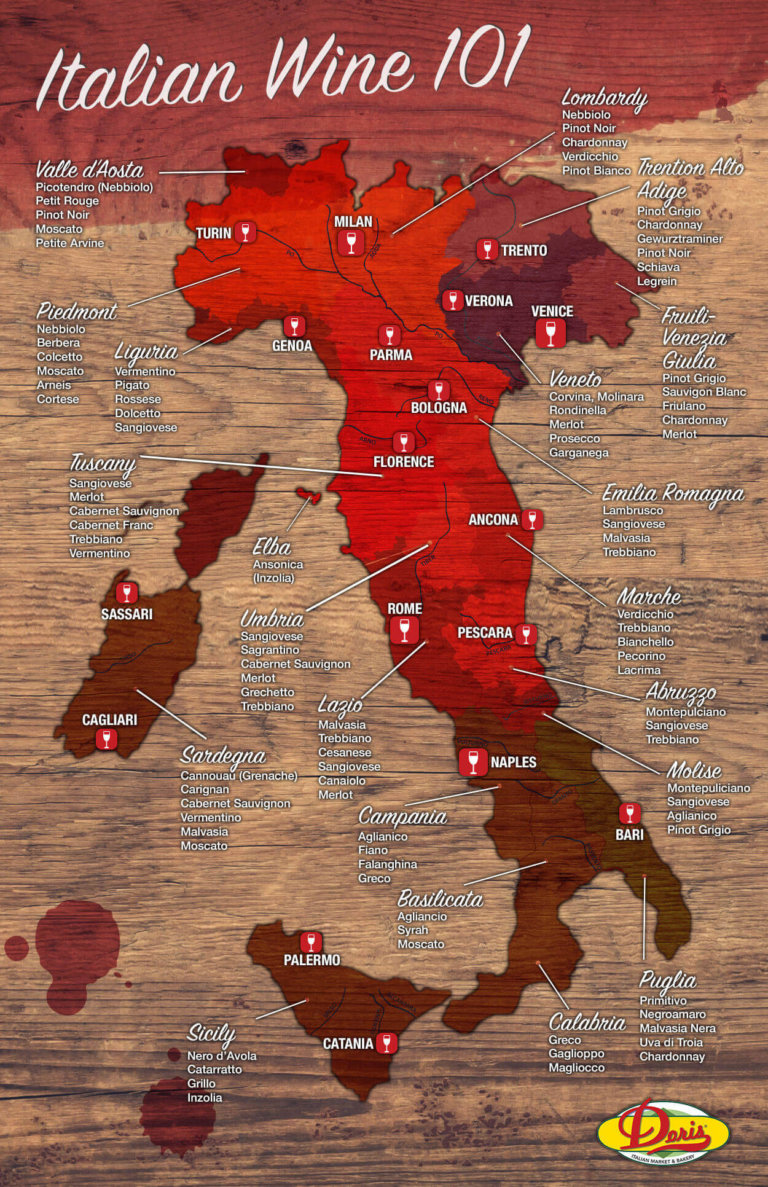

That means that if a wine does not meet the standards of Chianti Classico DOCG it will not have the option of a demotion to Chianti DOCG, but must be labeled as IGP Toscana, the regional wine.

Note that Chianti Classico DOCG, although surrounded by Chianti DOCG, is a separate region and not a sub-zone of Chianti DOCG. Chianti has dramatically improved and become more consistent in recent decades, rejecting the fiasco in favor of tall Bordeaux style bottles with high shoulders. The stereotypical straw-covered flask of Chianti, called a fiasco in Italian, made a colorful candle holder, but the wine was not always that good. Chianti quality fell in the late twentieth century, however, causing lowered standards and especially a drastic expansion of the Chianti regions. This is the quality area originally delineated by Cosimo Medici III in the early 18th Century, which was in turn developed into a world-class wine by Barone Ricasoli in the late 19th century. The center of all the fuss on the map, in terra cotta, is the Chianti Classico zone, a DOCG. We start with Chianti, the most widely produced wine in Italy (Valpolicella from the Veneto is number two). Sangiovese has multiple clones (sub-varieties) and goes by a number of different Italian names. One style is fruit forward, with red fruit like cherries and strawberries, a hint of tomato, spices like cinnamon and clove, bright acidity, medium to low tannins Another style is more rustic, showing dark chocolate and smoke with herbal notes like oregano and thyme, dried flowers, tomato, gripping tannins, highly acidic. In its epicenter of Tuscany, it tends to show sour red cherries, earthy aromas, and tea leaf notes, with medium-plus tannins, and high acidity. The Sangiovese grape derives its name from the Latin sanguis Jovis, “the blood of Jove”. By the Tyrrhenian Sea the climate is Mediterranean and temperate, but inland, among the rolling hills, summer days are harsher and evenings cooler, a lovely environment in which to promulgate fine wine grapes. Tuscany is certainly not all Sangiovese and Cabernet-a number of white wines express themselves here, including Vernaccia di San Gimignano.

It is also a commercially important wine region, producing an array of fine wines, up to and including the so-called “Super Tuscans” (with which Cabernet Sauvignon is making major inroads). We view Tuscany as a romantic land of rolling hills dotted with picturesque villages, and it is just that. The big three Sangiovese wines are Chianti, Brunello di Montalcino and Vino Nobile di Montepulciano. Halsted St.The map of Tuscany might seem a little daunting at first, but it becomes simpler if you consider than the vast majority of the colored spaces on the map grow some form of Sangiovese. He developed a distinct style which stemmed from his impressions of life, nature and the Mediterranean at an early age.Ĭondition: This linen backed poster map is in A condition.ġ932 S. Geometric forms and architectural structures are incorporated in almost all of his work. At the age of 13, Nicola enrolled at the Accademia di Belle Arti di Roma and in the 1940s he began devoting himself to painting in a studio at Via del Babuino in central Rome. Published by the Italian Ministry for Foreign Trade, it is a splendid advertisement for Italy’s myriad world-class wines, with each region noted for the wine which it produces.īorn in Calabria, Simbari grew up in Rome, where his father was an architect for the Vatican. This marvelous brightly-colored poster map was created by Nicola Simbari, one of Italy’s most important modern artists.


 0 kommentar(er)
0 kommentar(er)
